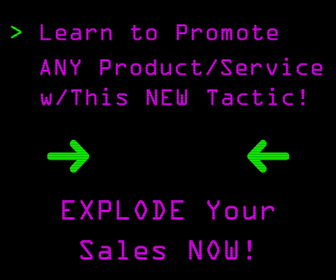There are tons of places online where brands can connect with their customers.
There's social media, like Instagram and Pinterest.
There's Twitter, too. And of course, Facebook ads are a marketing staple.
But there's another place you can reach people, and it's one you wouldn't really think of as being a place where consumers would be receptive to marketing messages.
It's messaging apps.
These modern apps are overtaking old-school SMS text messaging.
This is especially true outside of North America, where SMS can often incur hefty fees from mobile carriers.
Apps like Kik, Facebook Messenger, and WhatsApp are used for personal one-on-one or group messaging.
It's a place to chat directly with friends, much like SMS texting.
And like SMS, messaging apps are a surprisingly effective way to reach your customers.
You wouldn't think, at first glance, that someone would want ads in a text message — whether it's SMS or an app.
They seem like places that are kind of “private,” with an intimacy to them that stands in contrast to something like Twitter or Snapchat.
It seems like a marketing message on these apps might feel kind of intrusive.
But this is one of those things where that seemingly common-sense intuition is actually dead wrong.
In a recent blog post, Hootsuite explains how brands can use messaging apps to offer individual customers a highly personalized experience that builds trust.
Offering more personalized experiences
Following in the steps of retailers like Sephora, H&M introduced their own Kik chatbot that doubles as a personal stylist.
The bot offers outfit inspirations and style recommendations based on a user’s preferences.
Within the app, users are asked questions like “How would you describe your style?”
Users can respond with “formal” or “casual,” for example.
The bot will then rifle through a catalogue of styles to offer you a complete outfit.
From there, users can choose to switch items around or tap “shop it,” “share it,” and “save it” with each recommendation.
When selecting “shop it,” users are give a link to the H&M mobile site for purchase.
Key takeaway:
By using a bot that asks questions to gain deeper insight into customers, brands can offer more relevant content.
It’s like taking an in-store interaction between consumer and sales associate and putting it online.
It’s friendly and real—the kind of interaction that encourages customers to continue to buy from your brand.
Direct sales
Fast food moves even faster with the Burger King Facebook Messenger bot.
Users are able to use the platform to order their food ahead of time and/or find a nearby location.
The app will also give users an estimate of their meal will be ready.
Other brands in the food industry have jumped on the trend like Taco Bell’s TacoBot on Slack and Domino’s Facebook Messenger bot.
Key takeaway:
Your audience is more likely to purchase if half the work is already done for them.
By reaching out to your customers on their own terms and eliminating most of the legwork—like where the closest location is and when it’ll be ready—you’re making their lives easier and they’ll reward you for that.
You can read about four more ways to use message apps for marketing — without spamming your customers — in the full blog post from Hootsuite.
CHALLENGE Yourself to Profit!
Free Download: Build Your Profit-Generating Online Business With This Free Blueprint
Sign Up, follow the easy steps and You'll get the tactics, strategies & techniques needed to create your online profit stream. It's free!



